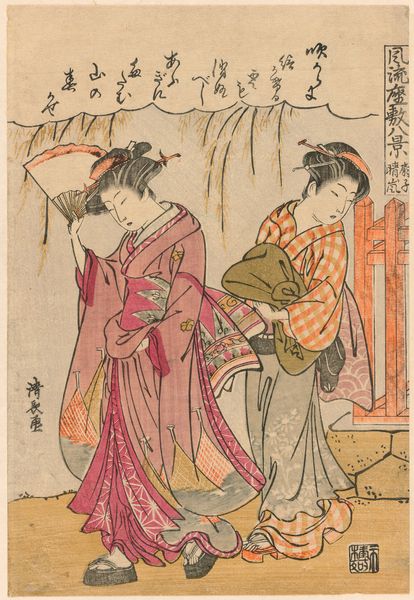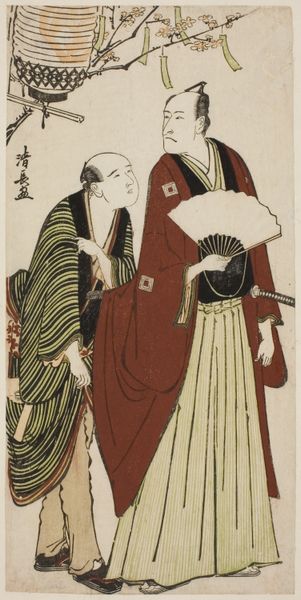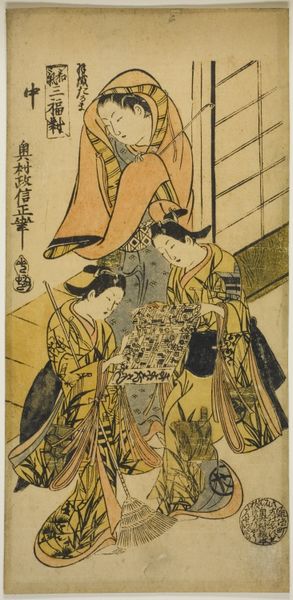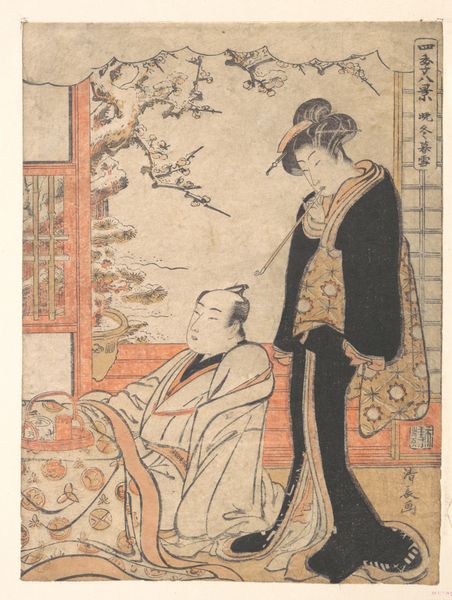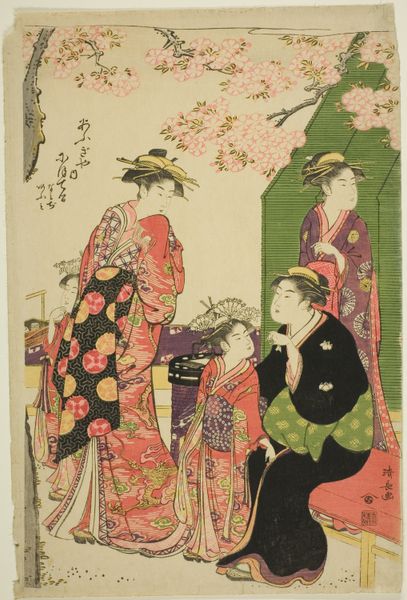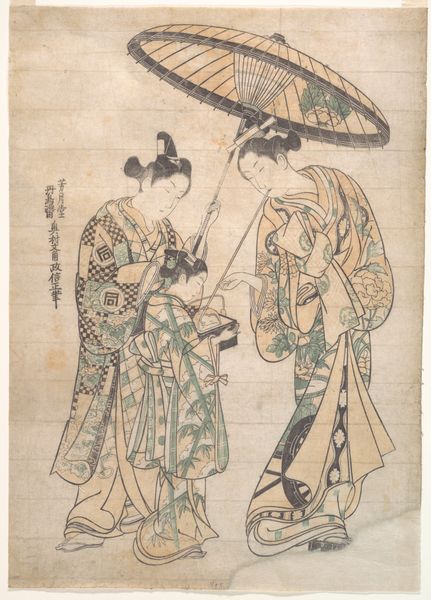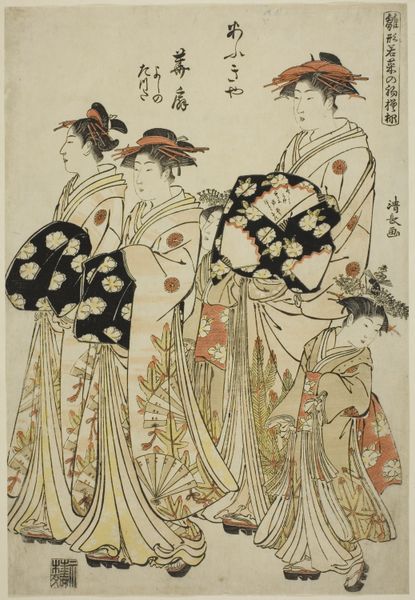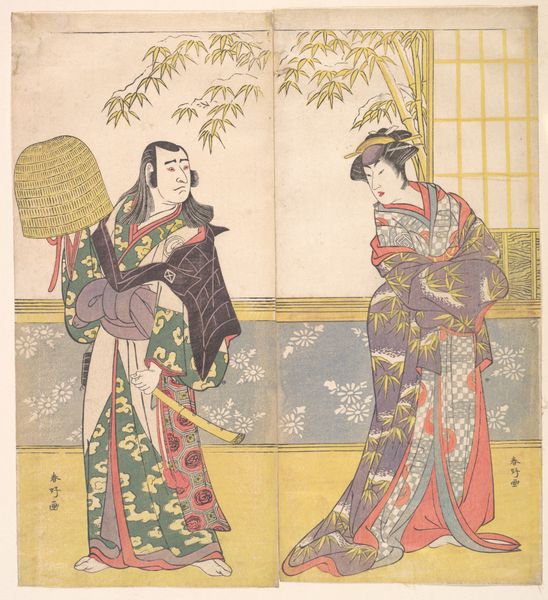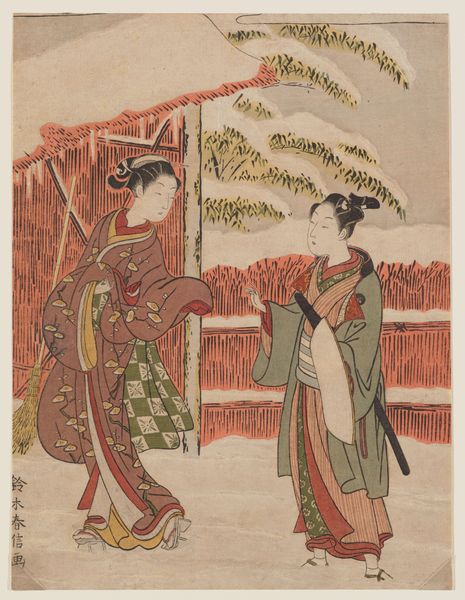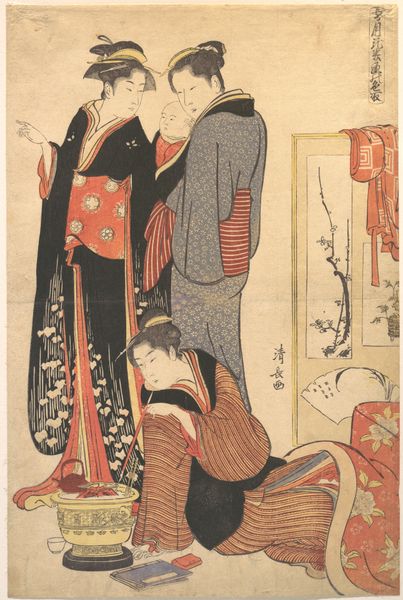
The Actors Sawamura Sojuro III as Kusunoki Masatsura and Arashi Murajiro as Ben no Naishi, in the shosa "Sode Furu Yuki Yoshino Shui," performed at the Nakamura Theater in the eleventh month, 1786 1786
0:00
0:00
print, woodblock-print
#
portrait
#
ink painting
# print
#
asian-art
#
ukiyo-e
#
japan
#
woodblock-print
Dimensions: 35.8 × 24.3 cm
Copyright: Public Domain
Curator: I’m immediately drawn to the umbrella, the distinct, bold stripes drawing my eye upward through the composition. Editor: Indeed. This woodblock print by Torii Kiyonaga, created in 1786, presents actors Sawamura Sojuro III and Arashi Murajiro in a Kabuki drama at the Nakamura Theater. Let’s consider the gender dynamics. Kabuki traditionally features men playing all roles. This image encapsulates performance, gender roles, and social commentary, doesn’t it? Curator: Absolutely. And what’s compelling to me are the layers of representation—actors embodying roles, performing a narrative that exists within a specific historical context, further highlighting gender as a construct. Also notice the layering of garments—signifiers of wealth and status, each patterned and intentionally chosen. It feels dense with codified meaning. Editor: Those patterns! The florals and geometric designs speak volumes. The cherry blossoms evoke a fleeting beauty, tied to mortality in Japanese symbolism. And consider the crossed swords, clearly signalling both drama and perhaps a confrontation, suggesting that we might be looking at themes of sacrifice and honour, important facets in that specific era. Curator: That intersects with broader concerns. We see societal constraints manifested within the stylized poses of the actors; particularly for Sawamura Sojuro III who plays Kusunoki Masatsura. And looking at Kusunoki’s costume on the right; that bundle tied to his back surely holds symbolic meaning regarding responsibility. He also seems hemmed in behind the wooden rails, restricted in place. It begs questions: Are they truly free within their prescribed roles? How do these performative constraints echo societal pressures? Editor: And how does it reflect and refract power, as performed through gender. I wonder too about the meaning behind that long vertical tablet behind the man with the tied bundle on his back, it could relate to Shinto or perhaps Buddhism with possible allusions to protection. And consider those falling petals from above. They indicate ephemeral concepts of longing and loss. Curator: The dialogue this work generates—between gender performance, social expectation, and personal experience— resonates even now. Kiyonaga captured something truly enduring in that instant. Editor: Indeed, the dance between ephemeral beauty and embedded cultural meaning makes this piece a poignant example of the Ukiyo-e tradition.
Comments
No comments
Be the first to comment and join the conversation on the ultimate creative platform.
